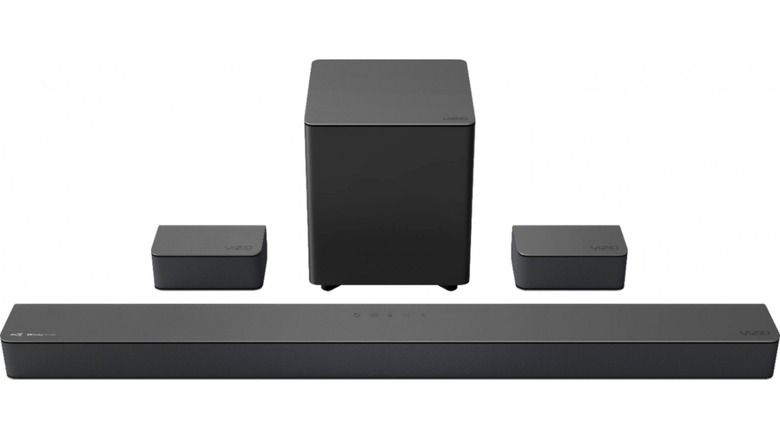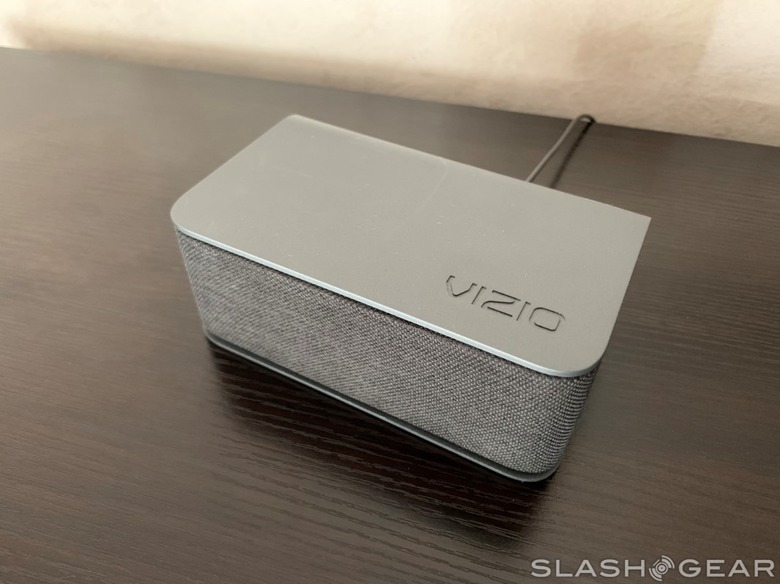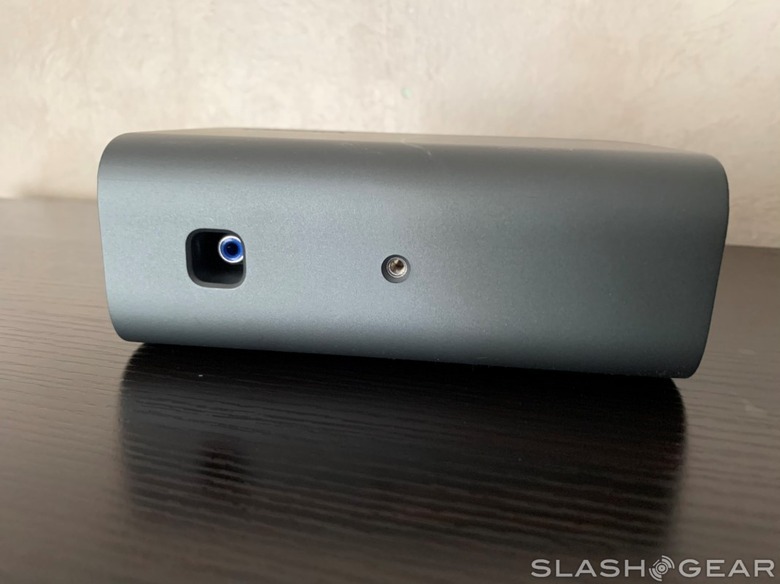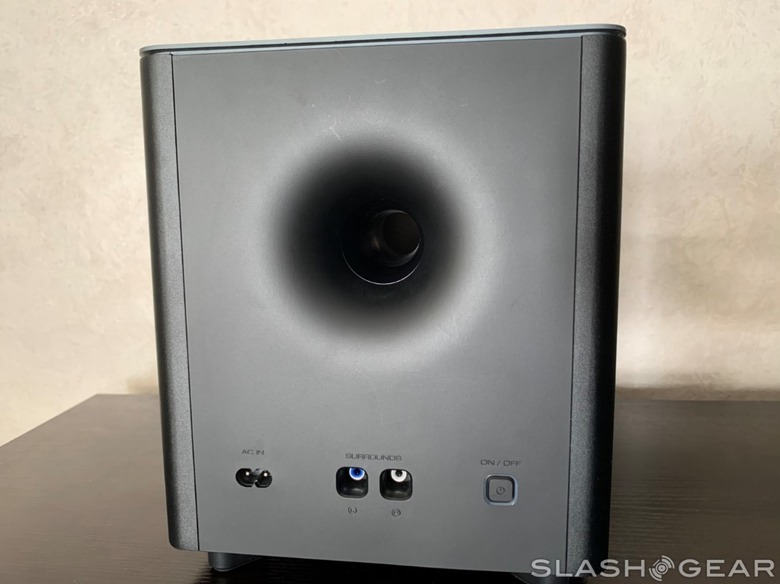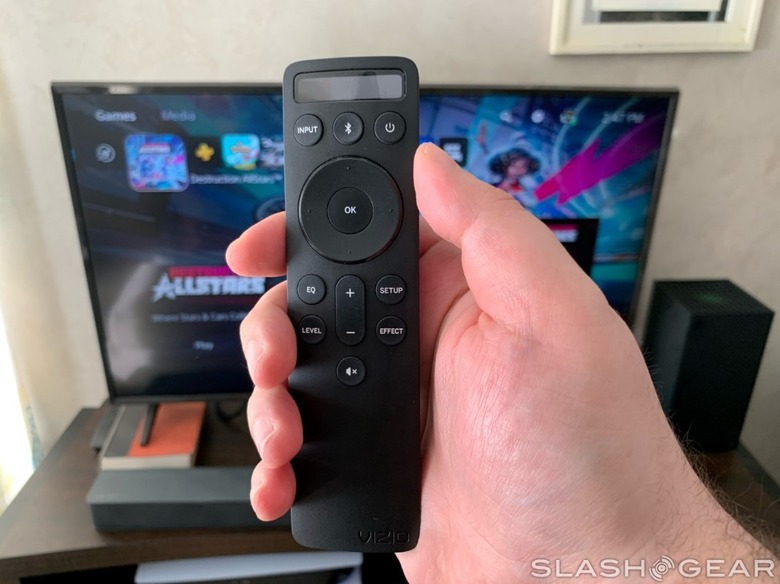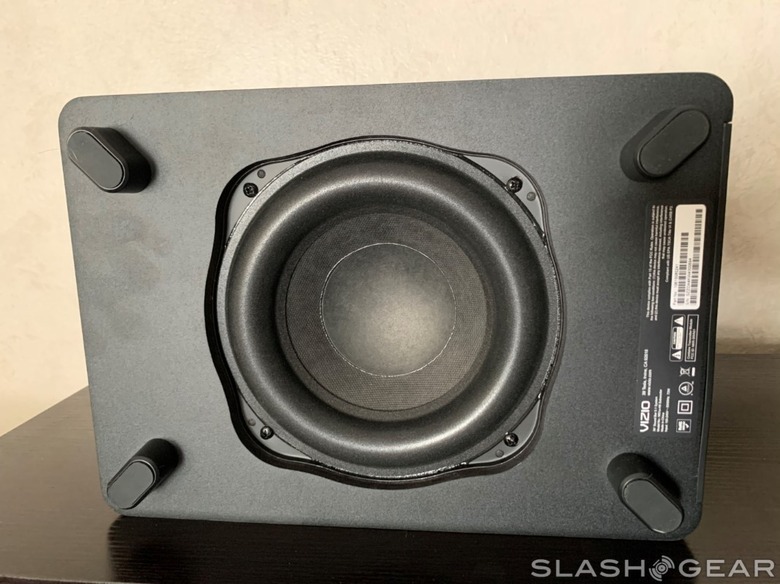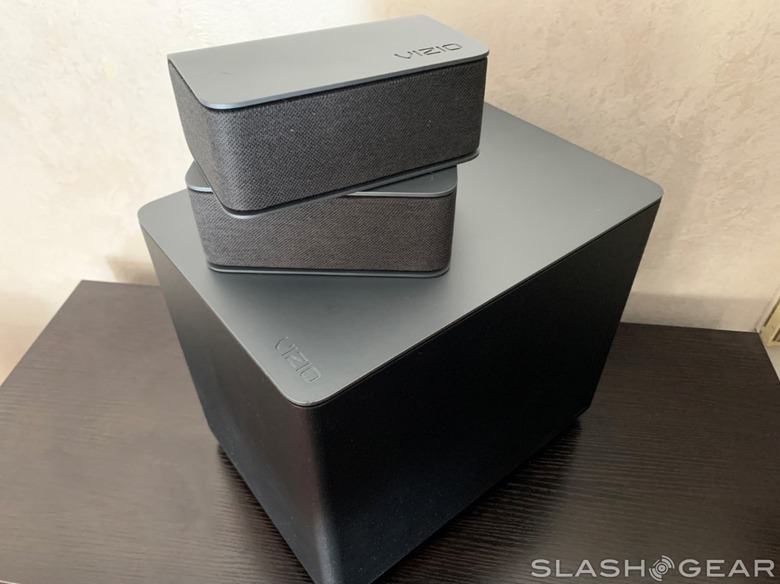Vizio M-Series 5.1 Soundbar Review: Good Sound At A Solid Price
I don't think it's controversial to say that watching movies at home can be something of a nightmare when it comes to audio. Back when I was using only my TV speakers, it always seemed like the audio balance was very off – scenes that were primarily dialogue would be whisper quiet while action scenes would be blaringly loud. So, I set out to fix that issue by getting myself a soundbar, which did help quite a bit but didn't solve it entirely. The quest to fix this issue permanently seems to lie with multi-speaker/surround sound setups, so I was hopeful that Vizio's new M-Series 5.1 Home Theater Soundbar would do the trick.
Before we dive into the review, I should start by saying that I'm what I'd call a practical audio guy, not an obsessive. We'll chalk that up to my childhood: I'd go over to my aunt and uncle's house and be under strict instructions not to touch three of the four remotes that controlled my uncle's home theater setup. Fear of irreversibly screwing up this delicate audio balance in my childhood has led to me to being an adult that values simplicity in their audio devices, and while there were some hiccups in the setup process for the M-Series, getting everything up and running wasn't quite as arduous as I was worried it would be.
The M-Series Home Theater System, as the name suggests, comes with four different items: a soundbar, a subwoofer, and two surround speakers that are supposed to sit behind where viewers are seated. The subwoofer, meanwhile, is supposed to sit to the side of a chair or couch and it connects wirelessly to the soundbar. The two surround speakers connect via extremely long cables to the back of the subwoofer.
Not only can the M-Series 5.1 be used in a surround sound configuration with all four of its parts, but for smaller spaces it can be used in a front-facing configuration that puts the subwoofer to the side of the TV and has the surround speakers bookending the soundbar. It can also be used in a dual stereo configuration that mirrors the surround arrangement, only in this mode all of the audio gets sent to each speaker, rather than just bits and pieces being sent to the surround speakers. So, you have some options depending on the sound you want and your willingness to run cables.
From a design standpoint, I really like the look of Vizio's system. Everything is boring, unassuming shades of gray and black and that's exactly what it needs to be in order to blend into the environment. Both the sound bar and the subwoofer are smaller than I expected, but they still pump out sound despite their smaller size. Nothing feels overly large or bulky, which is another win for those of us living in small spaces.
The sound bar has a few different connectivity options. Around the back, you'll find two different 3.5mm AUX IN ports for connecting external devices, though one of these is reserved only for voice assistant devices. The soundbar also has one HDMI In port, one HDMI out (eARC) port, USB In (which only supports WAV and MP3 file playback), and digital optical audio in. The sound bar also supports Bluetooth connections, so if your phone doesn't have a 3.5mm jack – as so few do these days – you can stream music instead of making a direct connection.
In the box, you've got everything you need to connect the soundbar to your TV through all of those different connection methods listed above, and you've also got wall mounting hardware as well. No matter how you want to use the M-Series system, Vizio has you covered with the accessories and cables that come in the box, which is always nice to see.
First time setup was a pretty straightforward process, but it wasn't without a few hitches. To start, the M-Series 5.1 system user manual (which is very detailed and useful, so thumbs up there) prompts you to pick your connection type and hook up the soundbar to the TV; I chose HDMI eARC. From there, you need to plug in the soundbar, then connect the surround speakers to the back of your subwoofer using their color-coded ports, before plugging in the subwoofer itself. Once they're both plugged in, the soundbar and subwoofer should automatically sync – they did for me – and the soundbar will search for active connections, managing to detect my HDMI eARC connection after a few moments.
This might be the first time in my life where audio hardware setup properly on the first try, but all was not perfect in my new surround sound wonderland. As I started watching the freshly-released Lord of the Rings 4K remasters, I noticed that the sound bar and surround speakers were emitting a popping noise every few seconds.
As Frodo and Sam set out from the Shire and began their adventure, I was trying to figure out how to get rid of this popping noise. I first made sure that all the cables were connected securely, and then, thinking that it was an issue with the wireless connection, I tried moving the subwoofer closer to the soundbar. None of that helped, so I did what every clueless person does at some point during the troubleshooting process and I started randomly changing the soundbar's settings with no clear idea of how this would help fix the popping issue. Surprise – that didn't work.
After a few factory resets and subsequent trips through the setup process, nothing was fixing the problem. As it turns out, I was close to the solution when I was changing the distance between the soundbar and the subwoofer, as the issue was indeed with the wireless connection. The subwoofer was placed too close to my wireless router, which is in my living room right next to my TV because I rent and that's the only place I have a coaxial hookup. Vizio told me that moving the subwoofer at least six feet away from my router – previously the router was right in between the soundbar and subwoofer, about three feet from both – should solve the issue.
About a year ago I made the awesome/silly decision to buy a sectional couch that fills most of my living room, so I was limited on options when it came to getting this subwoofer six feet away from my router. I found a suitable spot, though, and voila – my popping issues were solved. Honestly, wireless interference should have been my first guess, but regardless, it's important to keep in mind that you need a suitable amount of space between the subwoofer and your WiFi router, or else you're going to experience popping noises that ruin your experience.
If your router is in another room, then you're good to go, but if you live in a small space like an apartment or a studio, the placement of your router is something to consider before buying this kit. There's no option to hardware the two components if wireless isn't working out. Thankfully, being in a small space without a ton of layout options doesn't pose more of an issue besides considering your router and subwoofer placement. While Vizio's setup diagrams show the two surround speakers placed directly behind the seating area, I don't have any room behind my couch as it's up against the wall. So, instead of putting the speakers behind my couch, I simply stuck them in the corners of the living room opposite the soundbar and the surround sound effect still worked just fine.
The M-Series 5.1 system uses both Dolby Atmos and DTS X, and I have to say, it sounds pretty incredible. For probably the first time in my life I could hear Ian McKellen clearly as he whispered through Gandalf's lines, and the battle scenes in Lord of the Rings really had a lot of power behind them.
Another caveat about apartments: this system can obviously get loud, and there were certain points through my Lord of the Rings trilogy watchthrough that the subwoofer was quite literally shaking my walls. You might want to give the system a pass if you live in a complex where you share a wall with someone else, but you can also adjust treble, bass, mids, and even your surround sound and subwoofer balance using the remote that comes packed with this system. The remote comes with a built-in display that tells you what you're adjusting, and a column of LED lights on the soundbar itself will show you the level of whatever setting you're changing.
I really like the remote, but I think part of that is down to what I was using before I hooked up this Vizio system. My daily driver soundbar is a JBL Link Bar that uses Android TV, and I really despise that laggy and cluttered UI. The Vizio system is nice because it allows me to use my TV's OS, which is simple and responsive, while I manage all of the soundbar's settings on the remote. It's kind of like a best of both worlds. So, hey, if you're in the same boat and you're sick of Android TV, at least I can say that this Vizio system will give you some relief from that.
Vizio M-Series 5.1 Sound Bar verdict
All in all, I'm walking away impressed by this system. At $449.99, it seems like it falls in the mid-range in terms of pricing, and I think the sound quality is good for the price you pay. The fact that Vizio seems to regularly discount it to $349.99 makes it even more of a deal: a Sonos Arc, for example, also supports Dolby Atmos but comes in at $799, and that's without rear speakers or a subwoofer.
Setup was a breeze, which earns the M-Series big points, and if the subwoofer and soundbar ever fall out of sync, re-establishing the connection between them is easy as well. It's also very easy to balance the levels of the individual components in the package, so even if you can't match Vizio's ideal layout, you can still adjust everything to get the right sound for the space you have.
With a relatively small subwoofer and surround speakers, and that fact that you have some options when it comes to the arrangement of your speakers, I think this can also be ideal for small spaces. If you're only using TV speakers or a soundbar in your audio set up, this could indeed be a good upgrade that won't necessarily break the bank – at least not as much as other surround sound systems might.
